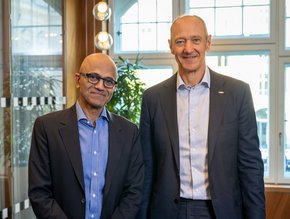What will the cybersecurity landscape look like in 2021?

As the year draws to a close, it is a time for reflection, learning and planning for the year ahead. 2020 was indeed a challenging year on many levels. For cybersecurity teams, the move to the ‘new normal’ stretched capacity and agility – but, on a positive note, it also highlighted the significance of cybersecurity at an executive level.
While 2021 will present evolving threats and new challenges, it will also offer some new tools and technologies that will help cybersecurity leaders to make cybersecurity a business differentiator, rather than it being viewed as a reactive – ‘putting out fires’ – department.
Below, we take a look at the biggest trends that cybersecurity teams should be aware of for the year ahead.
The new face of the CISO
The CISO was traditionally viewed as the department of no. It was seen as cautious and a blocker to change. But cybersecurity has begun to move away from being a backroom function. This evolution was quickened by COVID-19, which highlighted just how essential cybersecurity is to successful business. Next year, rather than being seen as a roadblock to innovation, the cybersecurity department will continue to move to be viewed as an enabler. For the CISO, this means a new, boardroom-focused role, where they are responsible for shaping the business as much as other C-level executives are.
Intelligent, real-time threat detection and response
Breach detection and response time are moving to become instantaneous – which in itself will become the normal in 2021. With more IoT devices than ever before, organizations do not have the luxury of time in responding to breaches. Take, for example, a self-driving car. If an attacker was to hack this while on the road, the impact could be detrimental to human safety. The focus on speed both in the detection and in remediation is essential. At the center of this is automation and artificial intelligence (AI).
While AI is used commonly for detecting threats, it’s at a relatively nascent stage when it comes to actually responding to them. We know that less than 18% of organizations make significant use today of AI for cyber threat response. However, AI can significantly reduce the time taken to create a virtual patch for a detected threat or develop new protection mechanisms for evolving technologies.
Next year more organizations should be using AI in the form of security orchestration, automation and response (SOAR) technologies, which enables the collection of security data and alerts from different sources. SOAR allows incident analysis and triage to be performed, leveraging a combination of human and machine power. This helps define, prioritize and drive standardized incident response activities according to a standard workflow through connections to data sources and platforms.
The consumerism of security
It’s estimated that there will be three internet of things (IoT) devices in existence for every person next year. At the same time, social commerce continues to rise, with more brands focusing on direct-to-consumer selling and relationships via social media platforms. Both these levers offer an expansive attack surface in the form of connected devices, digital storefronts and engagement tools. Cyberattackers will look to exploit platform vulnerabilities and use phishing attacks.
For consumer-focused organizations, this means a higher risk of data breaches and loss if the right protocols and technologies are not in place for defence. As a result, product and platform security will come to the forefront next year, particularly as organizations realize the huge value that consumers place in trust, privacy and security.
For cybersecurity professionals, the task for next year is one of evolution. COVID-19 has heightened the importance of cybersecurity as a business enabler, giving cybersecurity leaders an opportunity to become more involved in business strategy and innovation. With the right technologies and roadmaps in place for security, organizations can move forward with confidence into the new year – armed with the knowledge that they have fostered the resilience and agility needed for success.
For more information on business topics in Europe, Middle East and Africa please take a look at the latest edition of Business Chief EMEA.






